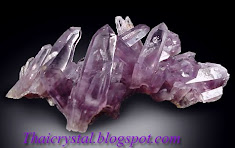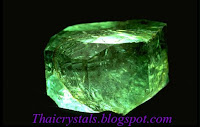Color change sapphire
A rare variety of sapphire, known as color change sapphire, exhibits different colors in different light. Color change sapphires are blue in outdoor light and purple under incandescent indoor light; they may also be pink in daylight to greenish under fluorescent light. Some stones shift color well and others only partially, in that some stones go from blue to bluish purple. While color change sapphires come from a variety of locations, the gem gravels of Tanzania is the main source.
Certain synthetic color-change sapphires are sold as “lab” or “synthetic” alexandrite, which is accurately called an alexandrite simulant (also called alexandrium) since the latter is actually a type of chrysoberyl—an entirely different substance whose pleochroism is different and much more pronounced than color-change corundum (sapphire).
Source of color
Red rubies are corundum which contain chromium impurities that absorb yellow-green light and result in deeper ruby red color with increasing content. Purple sapphires contain trace amounts of vanadium and come in a variety of shades. Corundum that contains ~0.01% of titanium is colorless. If trace amounts of iron are present, a very pale yellow to green color may be seen. If both titanium and iron impurities are present together, however, the result is a magnificent deep-blue color .
Unlike localized ("interatomic") absorption of light which causes color for chromium and vanadium impurities, blue color in sapphires comes from intervalence charge transfer, which is the transfer of an electron from one transition-metal ion to another via the conduction or valence band. The iron can take the form Fe2+ or Fe3+, while titanium generally takes the form Ti4+. If Fe2+ and Ti4+ ions are substituted for Al3+, localized areas of charge imbalance are created. An electron transfer from Fe2+ and Ti4+ can cause a change in the valence state of both. Because of the valence change there is a specific change in energy for the electron, and electromagnetic energy is absorbed. The wavelength of the energy absorbed corresponds to yellow light. When this light is subtracted from incident white light, the complementary color blue results. Sometimes when atomic spacing is different in different directions there is resulting blue-green dichroism.
Intervalence charge transfer is a process that produces a strong colored appearance at a low percentage of impurity. While at least 1% chromium must be present in corundum before the deep red ruby color is seen, sapphire blue is apparent with the presence of only 0.01% of titanium and iron.

Custom Search


















































